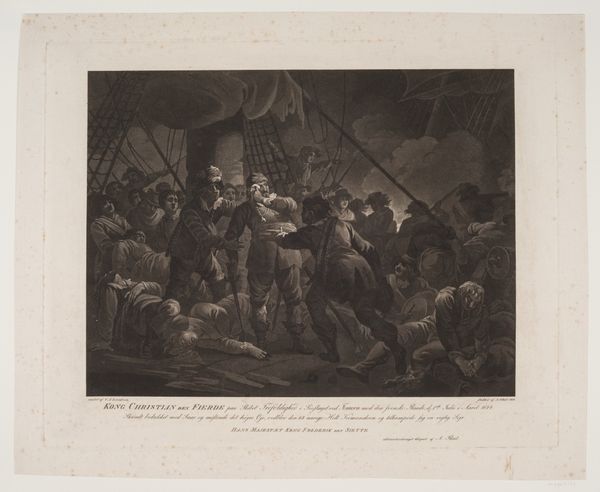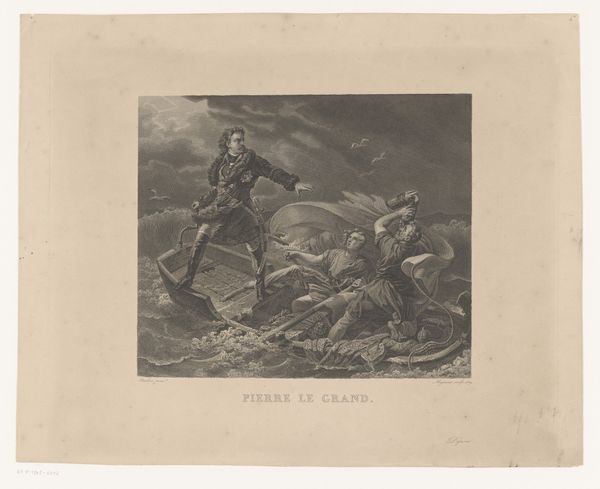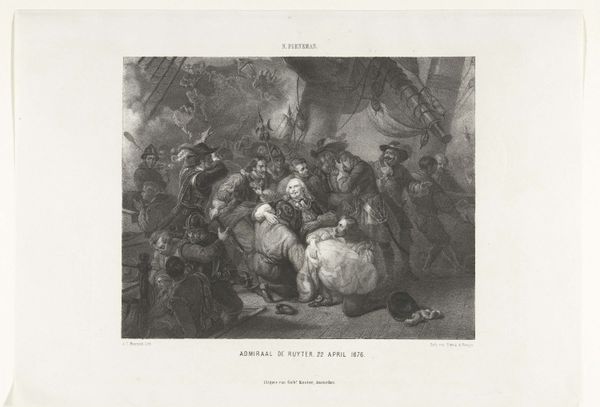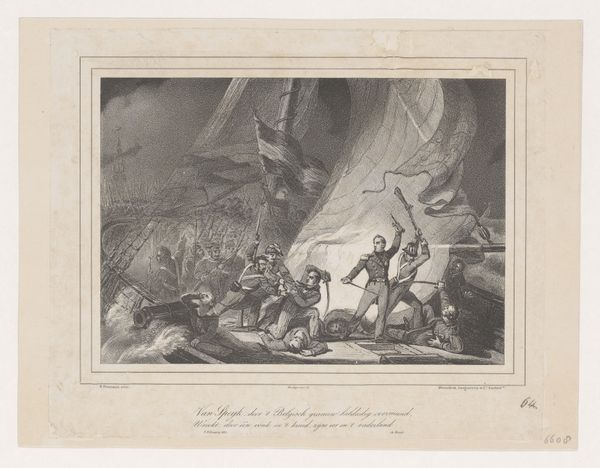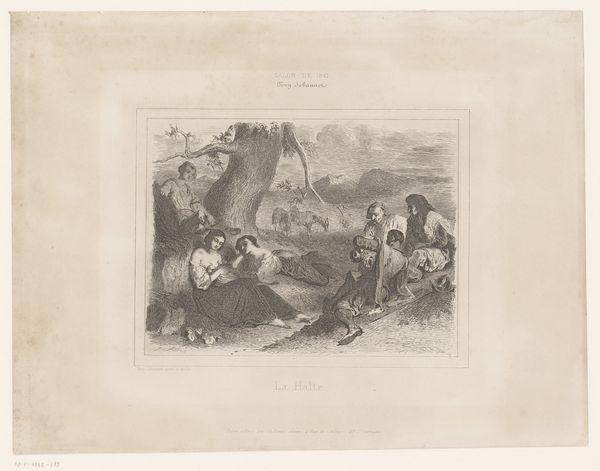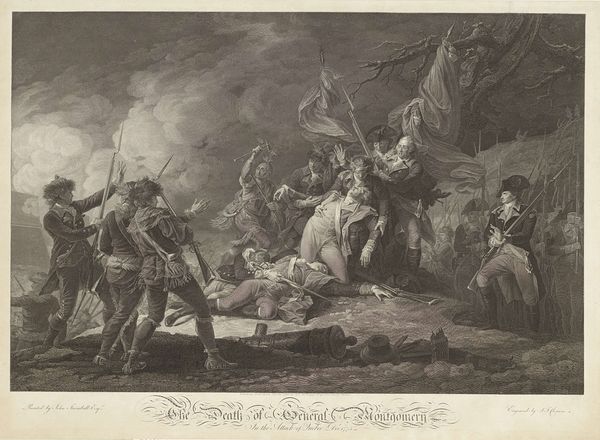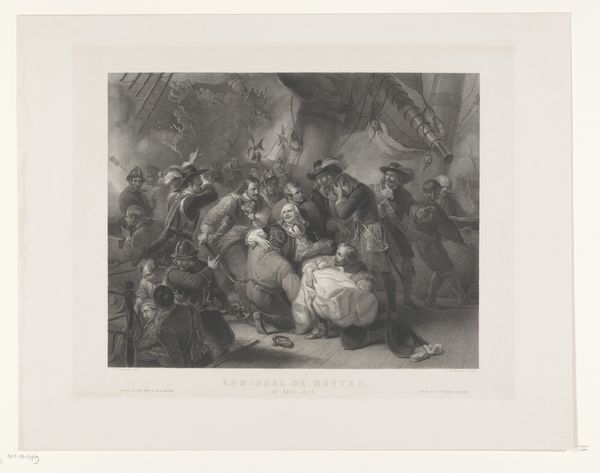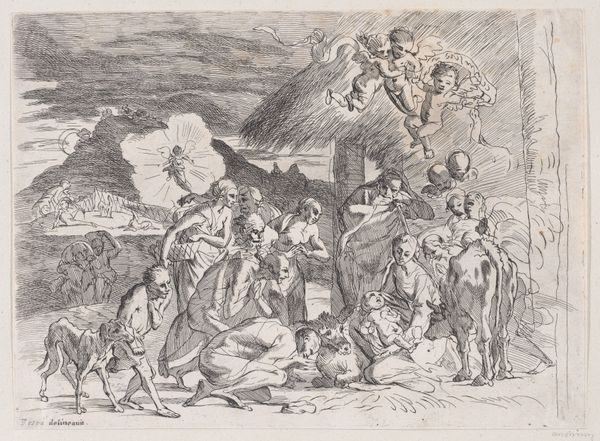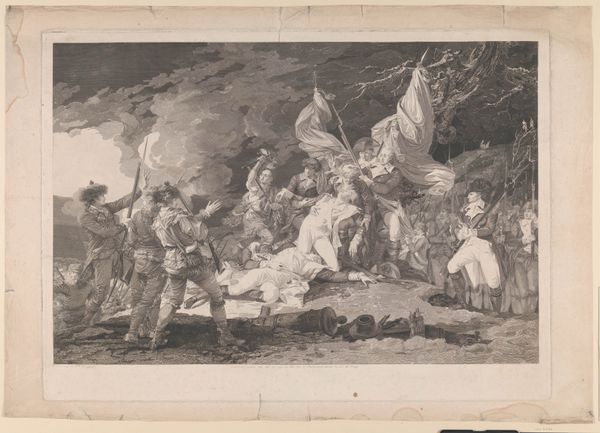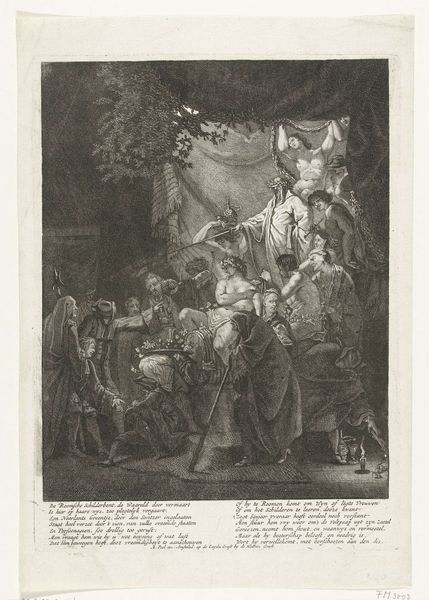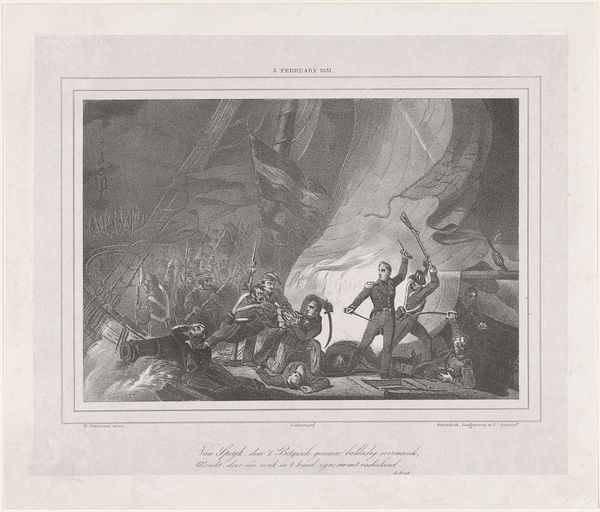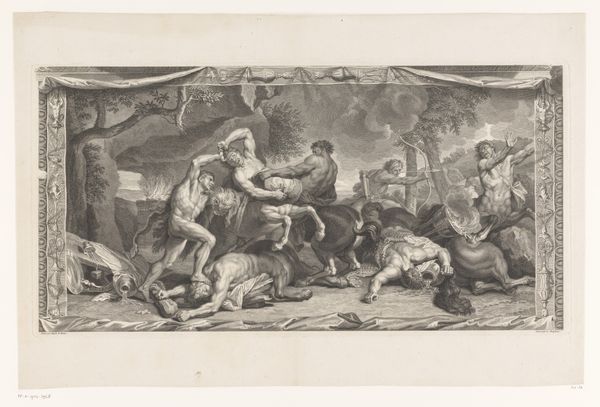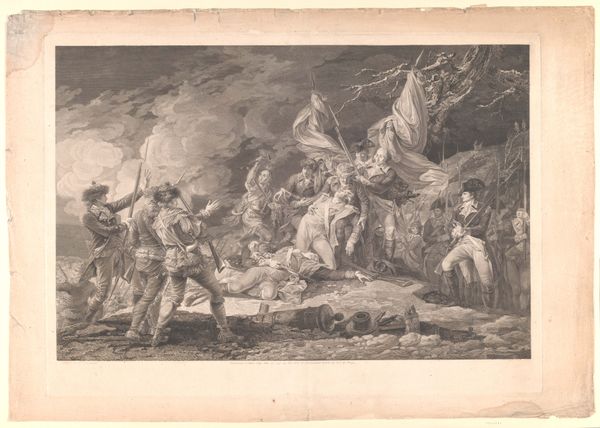
engraving
#
narrative-art
#
baroque
#
old engraving style
#
figuration
#
limited contrast and shading
#
history-painting
#
engraving
Dimensions: height 461 mm, width 558 mm
Copyright: Rijks Museum: Open Domain
Curator: Ferdinand Landerer’s engraving, "Simson en Delila," created around 1760, powerfully renders the Old Testament scene of Samson’s betrayal. It’s all drama, isn’t it? Editor: It is that. My immediate response is to its theatrical quality—the stage-like arrangement of figures, the dramatic lighting… almost like a spotlight illuminating the central act of betrayal. There's a dynamism to the composition that suggests intense action. Curator: Exactly! And think about Samson as this mythic strongman. By choosing to depict this particular moment—the shearing of his hair— Landerer zeroes in on vulnerability, the moment his power is literally cut away. Delilah, a culturally loaded symbol for temptation, fulfills her destructive role here. The cutting of hair carries with it traditions of power, strength and betrayal. Editor: Indeed, betrayal is key to the narrative but Landerer’s use of hatching and cross-hatching, characteristic of the Baroque, builds volume while keeping a tight lid on tonal variation. What this does is put nearly all the aesthetic weight on line, which sharpens the focus on the figures and action but tends to flatten and diminish emotional impact. It’s almost too neat to deliver the graphic violence of this narrative. Curator: That coolness is interesting. The print medium flattens emotion but also helps to carry and reproduce the narrative for a broader audience. There’s a sense of instruction embedded here, the cautionary tale meant to warn of deceit and the dangers of temptation. We’re meant to learn from Samson's mistake. The memory and symbolism endure and shape the cultural reception of the scene. Editor: I see what you mean. In isolating this moment of narrative climax, and filtering it through a calculated rendering strategy, the focus seems directed more towards rational contemplation, which is Baroque’s core aesthetic and the hinge on which cultural continuity is balanced. It requires the viewer to examine the compositional arrangement but does not offer emotional depth. Curator: Seeing it framed that way emphasizes how powerfully cultural memory gets translated and shaped through symbols. The layers build upon each other through these forms. Editor: Precisely. The medium refines the message; we discern new perspectives by way of an enduring form.
Comments
No comments
Be the first to comment and join the conversation on the ultimate creative platform.
